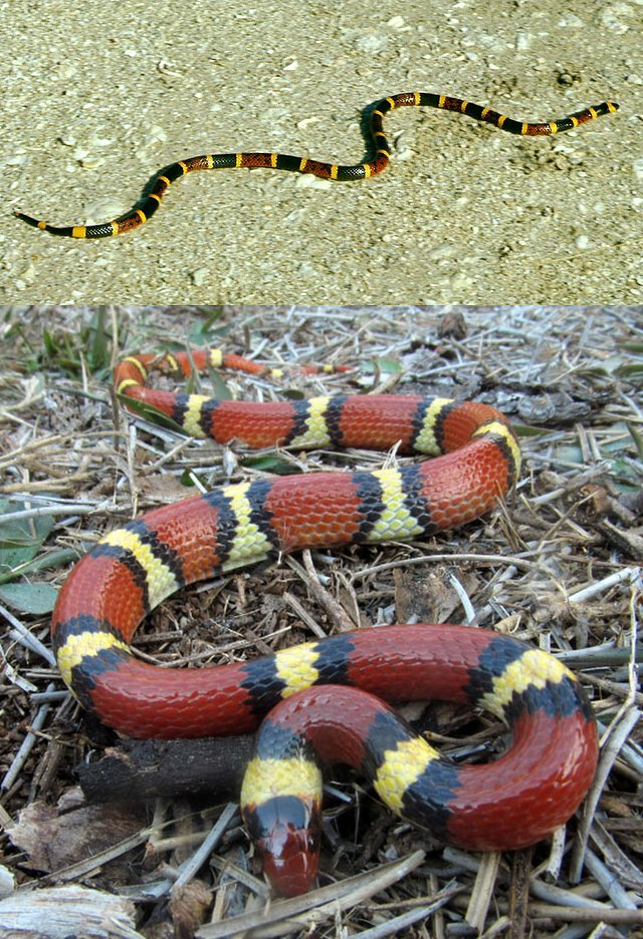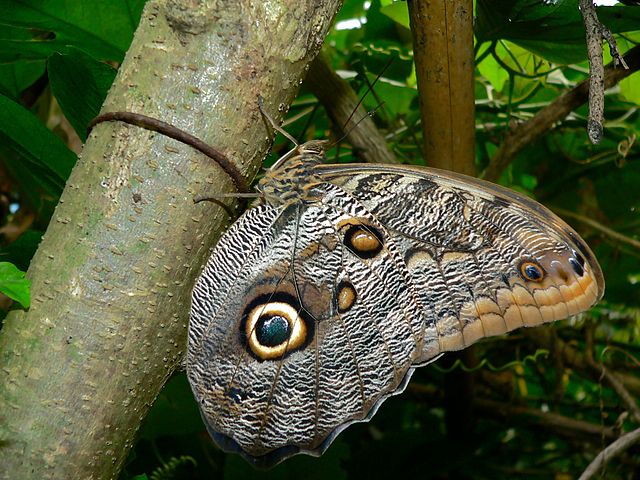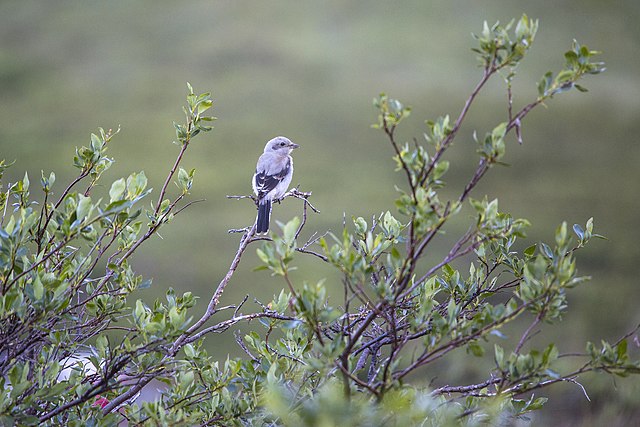by Shelby Wyzykowski
It’s that time of year,
As Winter draws near,
There’s a crisp, fall-fresh chill in the air.
And the trees once so green,
Paint a colorful scene,
With their typical, Autumnal flair.
Everyone dresses up,
Like a monster or pup,
Or anything else in between.
To shout “Trick or Treat!”
And get something so sweet.
Hooray! It must be Halloween!
But be on your guard,
For if you look hard,
You’ll discover a curious thing.
Some animals, too,
Wear disguises (like you!),
Some slither, or flutter, or sing.
It could be oh so thrilling,
And maybe quite chilling,
To learn of the what, why, and how.
So let’s waste no more time,
With these whimsical rhymes,
And talk about some of them now!
Which Snake Is Venomous and Which Is In Disguise?
If you just happen to be a hiker, camper, or all-around outdoorsperson, you might just recognize this catchy saying:
“Red touches yellow,
Kills a fellow,
Red touches black,
Friend of Jack.”
Yes, it’s true that I did just claim that we were finished with rhyming for now, but knowing this pithy poem might just come in handy one day. As a matter of fact, if you are in the forests of the Southeastern U.S. and happen to stumble across a snake sporting vibrant bands of red, yellow, and black, this memorable rhyme could even save your life. It describes the very important differences between two similar-looking snakes, the Eastern Coral snake and the Scarlet Kingsnake.
The venomous and potentially deadly Coral snake has a pattern of red, yellow, and black bands encircling its body. The non-venomous, harmless Kingsnake’s body displays a pattern of red, black, and yellow bands. So, why would a harmless snake evolve in such a way that it intentionally displays bright colors that are easily spotted by predators? Because it’s hoping that a predator will spot it, mistake if for the dangerous Coral snake, and leave it alone.
This evolutionary visual deception is known as Batesian mimicry. Named after the nineteenth century naturalist Henry Walter Bates (in honor of his work with mimicry in Amazonian butterflies), this type of mimicry offers a protective function to the mimic yet offers no benefit to the species being mimicked. Not surprisingly, the more noxious the model animal is (as in the case of the Coral snake, for example), the more mimics it tends to accumulate!

A Butterfly Dressed Like an Owl
Besides venomous snakes, owls are also apex predators that many smaller predators make a point to avoid, and the Owl Butterfly has evolved to take advantage of this fact. With the conspicuous yellow and black “owl eye” spots in the middle of its hind wings, this giant insect can be easily spotted in the rainforests and secondary forests of Mexico and Central and South America. Smaller animals think twice when they see the face of an owl, and this hesitation gives the large, slow-flying butterfly the time that it needs to escape. But unlike the Scarlet Kingsnake, this butterfly’s wing pattern resembles multiple predatory models. Some small predators can also mistake their “large-pupil” eyespots to be lizards or amphibians, which are two other types of predators that hunt by sight. This multi-purpose disguise makes the Owl Butterfly look intimidating when it is in fact quite timid!

Zone-tailed Hawk or Turkey Vulture?
But it’s not only prey species that take on other guises to deceive. Predators want to join in on the costume fun as well.
When a hunter mimics an inoffensive species to get closer to its prey, it is called aggressive mimicry. A prime example of a species that artfully employs this type of trickster predation is the Zone-tailed Hawk. This winged “wolf in sheep’s clothing” looks remarkably like a Turkey vulture.
Turkey vultures, which are scavengers, are not seen as a threat to living creatures, so small prey animals, such as mammals, lizards, and smaller birds, learn to ignore them. Hawks take full advantage of their vulture-like façade and further increase their chances of capturing unsuspecting prey by behaving like Turkey vultures as well. They circle about and fly with their wings slightly raised, rocking back and forth in the same way as vultures. To make the act even more convincing, these raptors often soar and sometimes even roost with vultures! It’s an ingeniously cunning way to stealthily sneak up on prey and make a direct and powerful attack.
Shrikes Are Excellent Mimics
Another bird that uses an ingenious trick to acquire a well-earned treat is the Northern Shrike. Unlike the Zone-tailed hawk that employs visual and behavioral mimicry to catch its prey, this pretty, seemingly unassuming songbird utilizes vocal mimicry. Like the Sirens of Greek mythology that used irresistibly hypnotic singing to lure in passing ships, shrikes mimic the calls and songs of their intended prey. As soon as their bewitching avian melodies have attracted their target animal to within attack range, they dispatch their prey and commence feeding.
Though the shrike has a falcon-like hooked bill (like a raptor), it still has a songbird’s feet. And since it does not have talons to tear apart its food, it has a unique method of consuming its meal. Shrikes will impale their quarry on sharp objects such as thorns or barbed wire. Once the prey is sufficiently secured, it is easier to tear apart and eat with their strong, sharp bills. They tend to favor starlings, house sparrows, and black-capped chickadees, but they don’t limit themselves solely to songbirds. Voles, mice, bumblebees, and beetles are also favorite choices, and they also catch lizards and frogs on occasion (however reptiles are normally not eaten and are left untouched once impaled).
And it’s not just adults that display this intriguing impaling behavior. Just after fledgling, young shrikes practice their impaling skills by gathering leaves or blades of grass and piercing them onto thorny branches.
Apparently though, impaling is not learned from their parents and is instead an inherited behavior, since juvenile shrikes raised alone in captivity will attempt to fix prey onto anything that is available in their cages. Ornithologists suppose that this impaling behavior has uses other than just the immediate consumption of a meal. They have observed shrikes building up caches of impaled prey in specific vicinities. Caching is a way for shrikes to store up food, similar to squirrels gathering up acorns for the winter. Also, it seems that the larger a male shrike’s cache is, the more females he attracts for mating. In addition, scientists have observed that impaled prey is deliberately positioned in specific patterns as a way to mark the boundaries of a shrike’s territory. It’s an unnerving yet effective deterrent that seems to successfully ward off rival shrikes!

Mimic Octopus of Indonesia
A blog post about animal pretenders wouldn’t be complete without mentioning the ultimate master of disguise, the Mimic Octopus of Indonesia. Like other octopuses, it uses chromatospheres (color-changing cells on its skin) to blend in with the shallow, sandy ocean bottom. Yet, unlike other octopuses, this crafty cephalopod is a natural-born shapeshifter. As it forages in the open water in full view of potential predators, it changes color, shape, and how it behaves based on its surroundings. Purportedly, it can mimic up to fifteen sea animals! For example, to disguise itself as the poisonous lion fish, its arms take on black and white bands and flare out and trail behind it. And to mimic the sole, a poisonous flatfish, it turns a mottled brown, arranges its arms in a leaf-shape and undulates its body as it skims along the sand.
Incredibly, scientists think that this marine mollusk can decide which costume to wear based on which predator is floating nearby. They have observed mimic octopuses, when threatened by the territorial damselfish, hide six arms in a hole and raise the other two arms (color-changed to display black and beige bands) in opposite directions. Now appearing to the confused damselfish to be a venomous banded sea snake (a known predator of damselfish), the eight-legged trickster is given the time it needs to make its escape! This use of dynamic mimicry (which is considered Batesian mimicry) is a brilliant tactic that allows the otherwise vulnerable octopus to move about freely while remaining cool, calm, and collected in a jeopardy-laden, predator-rich environment!
So now you know why,
A creature’s disguise,
Can be such an important thing.
It helps them to thrive,
Or just stay alive,
To see what the next day will bring.
And as you have fun,
On your house-to-house run,
To collect all the candy you’ve earned,
Do make sure you recall,
This blog post, rhymes and all,
And please don’t forget what you’ve learned.
Yes, you should be quite wary,
‘Cause it could be real scary,
To see ghosts, ghouls, and goblins galore.
But remember, beware,
There’s a whole world out there,
Of real creatures that offer much more.
Like the owl butterfly,
And the hawks in the sky,
Or even a shrike or two.
Just know if shrikes could speak,
With those sharp little beaks,
They might shout “Trick or Treat!” right at you!
Happy Halloween!
Shelby Wyzykowski is a Gallery Experience Presenter in CMNH’s Life Long Learning Department. Museum staff, volunteers, and interns are encouraged to blog about their unique experiences and knowledge gained from working at the museum.
Related Content
Carnegie Museum of Natural History Blog Citation Information
Blog author: Wyzykowski, ShelbyPublication date: October 22, 2021
